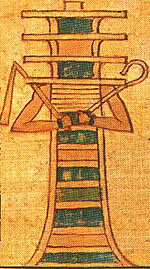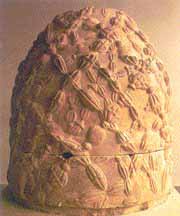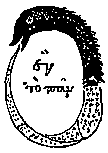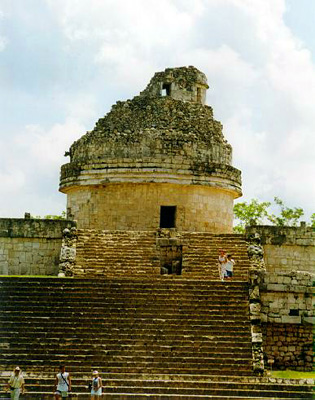The Serpent
Knights of the Round Temple
Originally
published under the title "Secrets of the Round Towers" in Atlantis
Rising magazine, Issue 46.
(Please
be patient while graphics are loading.)
by
Gary A. David
Copyright
© 2002-2004 by Gary A. David.
Round
Towers Around the Globe
Like pyramids, circular towers
of stone are found on both sides of the Atlantic.
The common figure linking these structures, however, proves to be the
serpent or snake. Cultures as diverse as the Celts of
Ireland and the Hopi
of Arizona associate
this religiously
and psychologically charged
reptile with round temples reaching toward moisture-laden storm clouds.
Over
65 towers of exquisite masonry, many rising over 100 feet high, dot the green
countryside of Ireland. The monasteries of Monasterboice, Domhnach, and Kilkenny
were all built adjacent to earlier round towers. Some researchers claim these
commanding structures were fire temples dedicated to sun worship. Why, then,
are round towers frequently located next to healing springs or holy wells issuing
from the subterranean realm over which the snake rules? (For
some exquisite photos of Ireland’s round towers, see Martin Gray’s Places
of Peace and Power web site.)
The
round temple was a key architectural feature of the Knights
Templar, which eventually gave rise to both the Rosicrucians and the Freemasons.
In Sacred Geometry (1982), Nigel Pennick explains the symbolism of the
circular form: “Like the Pagan temples, the round churches were microcosms of
the world. In the late Middle Ages, they became the prerogative of an enigmatic
and heretical sect, the Knights Templar. The round form of church became especially
connected with the order...” Most
of Europe’s Gothic cathedrals were constructed using designs uncovered by this
fraternal organization in a 12th century excavation of Jerusalem’s Temple Mount.
Some believe that a group of Knights Templar sailed to the New England coast
in 1308 and erected a Romanesque round tower at Newport, Rhode Island.
 |
|
Round
tower at Newport, RI
|
Even
earlier the Phoenicians may have spread this unique architectural feature globally
in homage to Baal, the fertility deity of rain, thunder, and lightning. In Jesus,
Last of the Pharaohs (1999), Ralph
Ellis avers that round towers were modeled after the Egyptian Benben tower
located in the Phoenix Temple at Heliopolis. (The Phoenicians were named after
the mythical bird that rose from its ashes.) Morphologically similar to round
towers, the djed pillar was known as the “backbone of Osiris.” This column
symbolically channeled kundalini (serpent energy) up the vertebra.
 |
|
Egyptian
djed pillar, anthropomorphized
|
 |
 |
|
Stupa with snake-like ornamentation on top |
Brick
pagoda, Kaiyuan, China
|
 |
 |
|
Omphalos
at Delphi in Greece
|
Ouroboros
Codex Marcianus, 11th century AD |
Contrary
to the Latinate cross representing the body of Christ, a circular structure
stands for the worldly or even the satanic domain. For instance, the omphalos,
a Greek word meaning “navel,” is the oracular Stone
of Splendor at Delphi. This sacred center where tellurian serpent forces
would accumulate had the ability to directly communicate with the gods.
The figures of the serpent and the circle are united in a Gnostic and alchemical
symbol called the Ouroboros. This serpent biting its tail designates world-creating
spirit hidden within matter.
Round Towers in the Four Corners
Numerous round towers built by the Anasazi (or ancestral Hopi) can still be
found in the American Southwest. At the Chetro Ketl pueblo ruin in Chaco
Canyon,
New Mexico, a round
“tower kiva”
rises three stories high. Circular towers at Kin Kletso and Tsin Kletsin in
the same canyon are also found. The outlying villages of Salmon Ruin 40 miles
due north and Kin Ya’a Ruin 25 miles due south contain similar structures.
 |
|
Tower
kiva at Chetro Ketl, Chaco Canyon, New Mexico
|
 |
|
Caracol
observatory at Chichen Itzá, Yucatan, Mexico
|
The Hopi refer to round towers as “snake houses.” In a narrative describing
the origin of the Snake Clan, the wife of the culture hero Tiyo gives birth
to a brood of venomous snakes, which keeps getting loose. Masau’u
(Hopi god of death, the earth, and the Underworld-- also spelled Masau or Masaw)
explains to the snake mother why her children no longer can have a house in
which to live.
“And Masau said, ‘No, the snakes have no houses; because they have bitten and killed Hopi they should never again have a house, but should live under rocks and in holes in the ground.’ But he also said the snakes houses (the round towers) which were built for them should never again be destroyed and that all coming generations of people should know the snake’s doom, never again to have a house.” (Alexander M. Stephen, “The Journal of American Folklore,” January/March 1929)
We are obviously talking not about rattlesnake pens but either the temples or domiciles of a dangerous, snake-like race. The same Hopi myth concludes with an offering to the recovered snakes:
“When the snakes were all collected and they
were gathered together at night, they took the first snake they had found and
washed its head and gave it the name Chüa (he of the earth) and decorated it
with beads and ear rings. Then the Youth [Tiyo] opened a bag and gave the people
cotton and beads and said as the snakes had brought rain the people should now
be happy and content, and on every celebration of the Snake festival good things
would be given to them.”
Chüa
is the Hopi name of the worshipped snake that initiated their biennial rain
ceremony still performed on the Arizona high desert. This name is similar to
“Chna,” an English transliteration of the Greek word referring to the Phoenician
land of Canaan. The biblical Anakim were known to have hailed from southern
Canaan.
Andrew Collins also states that the Nephilim
were called the sons of the Anakim, and that Jewish scholars translate the word
Anak as “long-necked” or “the men with the necklaces.” The Hopi offerings of
earrings and necklaces are particularly significant because the Hopi term naaqa
means “turquoise necklace” or “ear pendant ” and anaaq means “ouch!”,
an interjection used to express the extreme pain caused by snakebite.
In addition, Baal, the Phoenician rain god mentioned above, is similar in sound
and sense to the Hopi word paal. (Because the Hopi have no “b’” sound,
“p” is the closest approximation.) This word means “liquid,” “tree sap,” “juice,”
or “broth.” Its root word pa (or paa) denotes “water,” but it
also has the sense of “wonder.”
The Hopi legend previously cited may point to the Indo-European Nagas, those
snake worshipping seafarers originating from the Indus River Valley. They are
also known as the Long Ears, who stretched their lobes with earplugs. Coincidentally,
archaeologists found an example of this artifact in an ancient pueblo ruin known
as Snaketown near modern-day Phoenix.
Templar Testament
Did the Phoenicians, who might have assisted the earliest Anasazi in building
the round towers, come to the American Southwest and establish outposts in order
to trade with the latter? Were the Knights Templar the recipients of this Naga/Phoenician
legacy, carrying forth the ancient traditions bequeathed from Egypt? Do these
structures form a global network centered around ophidian fertility symbols?
To return to our starting point, were the Irish round towers also “snake houses,”
or phallic temples used by a race of serpent people whom St. Patrick in the
5th century AD ultimately had to chase into the sea?
Perhaps we are uncovering more questions than answers. Nonetheless, round towers
survive as a testament to the awesome spiritual power of the Knights of the
Round Temple. Their serpentine eyes gaze across the centuries, now and then
sending a shiver up the spine.
![]()